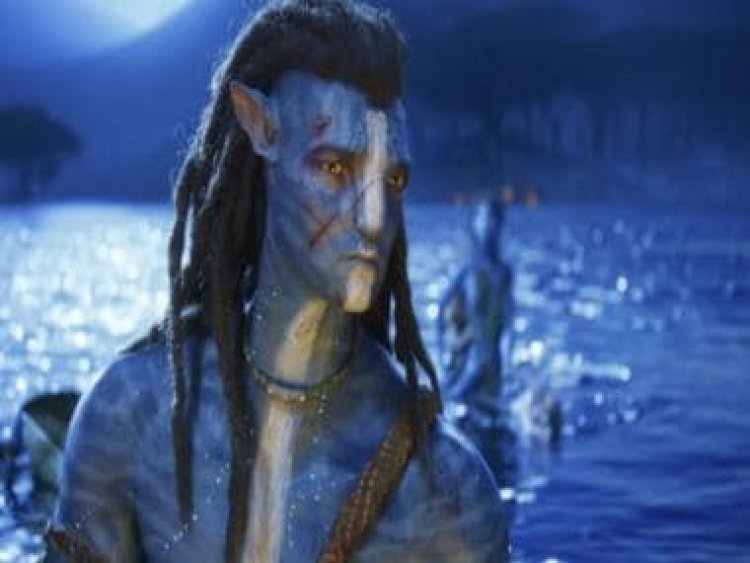The Devil’s Advocate: Avatar — The Way of Water is a prodigious but hollow spectacle
The Devil’s Advocate: Avatar — The Way of Water is a prodigious but hollow spectacle

There is possibly no frame, no prodigiously maddening sequence in James Cameron’s The Way of Water, that is also not a feat of puzzlingly exotic techno-fiction. The fact that film’s climax is a toast to two of his own previous blockbusters (Aliens and Titanic) is evidence, if any was required, that the ego behind such a project is also like most of us, driven by the idea of self-preservation. To which effect, Avatar: The Way of Water, is a stupendous, frenetic marvel of pixel-perfect dynamism. As a narrative, or even as a cold action film, however, Cameron’s behemoth of budgetary cockiness feels soulless, lacking in the kind of risqué methods that the filmmaker has in the past, wrested from films made on a smaller scale.
Cameron is possibly the greatest action director of his generation, a man who trusted the chaos of the laboratory far more than the muted tension of the computer screen before it got the better of him. In Aliens, True Lies and quite possibly the best action film, this side of 90s, Terminator 2: Judgment Day, Cameron stood for the kind of filmmaker who believed in grafting inhuman virtuosity over and above the basicity of the human form. ie. the extraordinary happened via the ordinary. The first Avatar film, as spectacular as it felt, withdrew that sense of jeopardy to an extent. The Na’vi, Pandora’s tall blue smurfs, capable of ‘living on’ via route A, B or C represent a risk-taking director’s regression to the sobriety of endless possibilities. Risk has, at least in a philosophical sense here, been replaced by opportunity (read spin).
There is no failsafe for great art. The very nature of timelessness suggests that a piece of work must survive both the elevation and decadence of the social context it will be reconceived in as a matter of argument. To which, Avatar’s genesis itself makes the human the outsider, restrict his methods of access. While the first film still had a handful of humans, almost all despicable carbon footprints, the second film does away with them in their entirety. Here they become extraneous comments on the vacuity of the human form, the utter classlessness with which it operates. While that stinging criticism is fine, there is really no attempt here to access is from the inside. Our villain, the brash and knuckleheaded Colonel Quaritch, craves revenge as a sort of masculine credo rather than anything rooted in cause or purpose. Even his lack of deftness or the casual brutality of men around him is never quite analysed in the wake of a setting that feels so breathtakingly surreal, you must wonder what pit of hell these men must have been raised in to be so ‘anti-beauty’.
But that’s the point. Pandora is surreal and beautiful but it never really feels liveable. The same way that the hills, the forests, the seas seem to eavesdrop on our brooding lives, summon us into their arms and spit us out with bullish clarity. No honeymoon, they say, can be lived forever, not even in the deliriously extents of Pandora. But Cameron insists we treat this has a film that exists between happily-ever-afters, where the happy and the after are really, aesthetic tarps used to cover the fragile sense of self. What are you really in a land of ubiquity if not commonly privileged?
Our amazingly talented cast have delivered stellar performances and truly brought the characters of #AvatarTheWayOfWater to life. It was great spending time with them.
Via: @jonlandau pic.twitter.com/p7SXz0eQg1
— Avatar (@officialavatar) December 18, 2022
The second Avatar film feels even weaker because it’s also the film where the spectacle completely and comprehensively takes over. The middle of the film, for example, is a tent pole, jarred into the ground of movie-going patience as a way of bullying another world into fruition. You could argue, there are deeper ideas here about migration, family etc but in a narrative sense, little changes except the location of the grand finale, the stadium where this semi-final will be contested. Cameron cleverly, but also cynically, postpones the question of intrusion. The humans don’t get to the village this time around. The battle takes place in neutral waters, over for that matter, a common object/animal of interest. Have the stakes around an event film ever felt lower? The thread of personal revenge, the father-son dynamic all feel cursive and ornamental. Even the deaths, though achingly illustrated, eschew a sense of loss. So committed is the spectacle to swiftly roll over the human story and start the spelunking of visual wizardry.
There is no doubting the technical craft of Avatar: The Way of Water, as there is no doubting the ego on James Cameron, who doesn’t stop short of forcefully reminding us of all that he has done before. The only worry here is that the tools have colonised the artisan to the point that he seems happily comatose in front of the possibilities of technical grandeur as opposed to the potential of an emotional reckoning. It’s probably where the other great of blockbuster filmmaking – Steven Spielberg – has the edge over him. In not just creating spectacles that illustrate the science of things, but also in etching in its midst a sociable reality we wish to return to as a matter of habit, as a matter of desire and as a matter of debate. As opposed to, of course, a theme park you’re probably content to visit once.
Manik Sharma writes on art and culture, cinema, books, and everything in between.
Read all the Latest News, Trending News, Cricket News, Bollywood News, India News and Entertainment News here. Follow us on Facebook, Twitter and Instagram.
What's Your Reaction?



























































